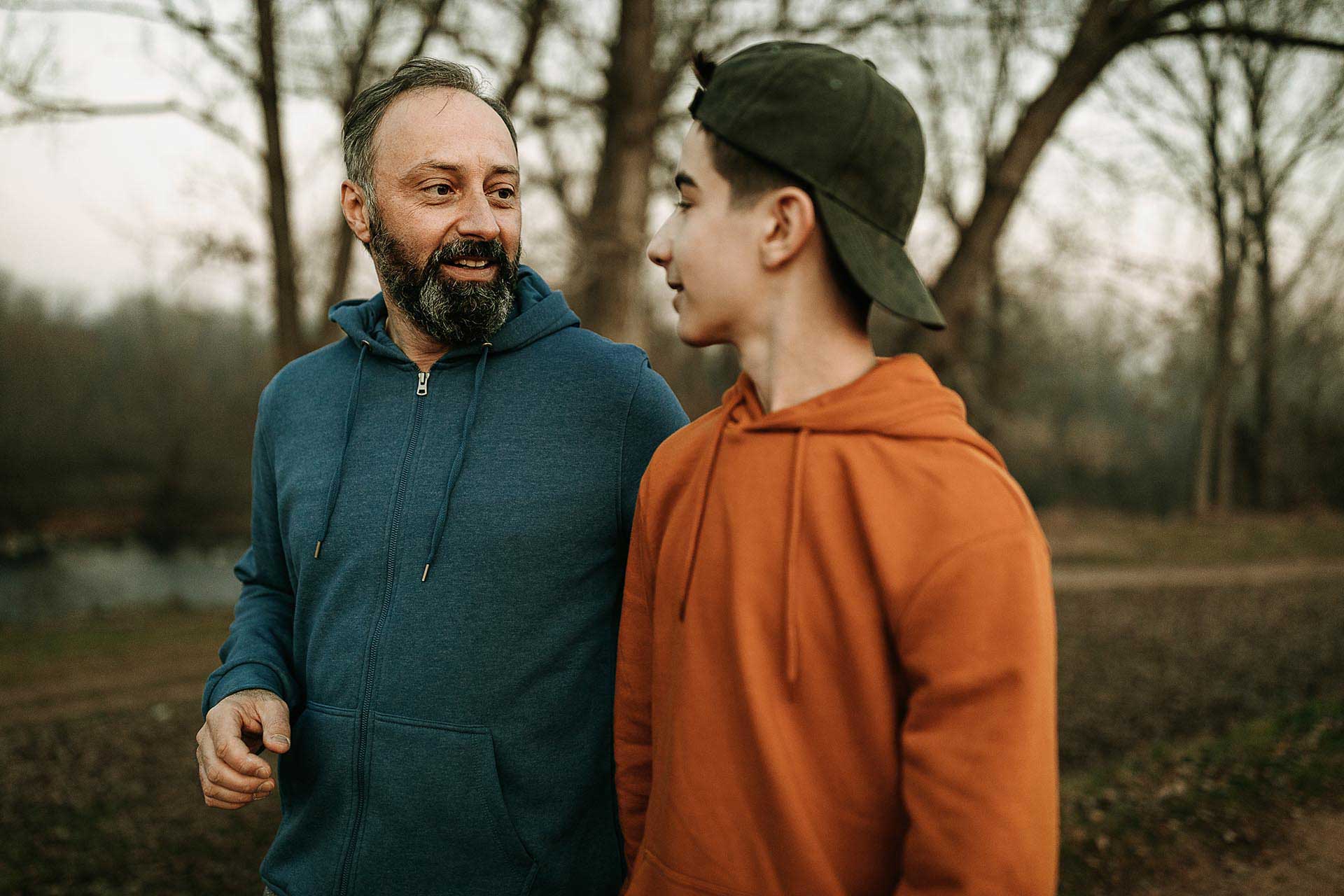Human sexual anatomy: a refresher course, or what your child needs to know
One of the most important things children need in their health education is accurate, age-appropriate information about bodies and bodily functions. There’s actually a lot going on down, or in, there – and sometimes parents might enter the chat not remembering every little body part or what they all do. And that’s okay! It’s not exactly everyday information. So, we thought we’d give our parent audience a refresher (and hey, you might even learn a thing or two). It’s also worth noting that some of this information on sexual pleasure you can wait to tell your kids until you feel they’re mature enough to know. They don’t need to know all of this, all at once.
Female anatomy
Outside
Vulva
This is the whole outside part of the genitals. It includes the outer and inner labia, the vagina and urethra openings, and the clitoris. Vulvas can be different shapes and proportions, and the skin tones can be different too.
Labia majora
The labia are the folds of skin around the vaginal opening. The labia majora, otherwise known as the ‘outer lips’, are usually fleshy and covered with pubic hair.
Labia minora
Otherwise known as the ‘inner lips’, the labia minora, are the fleshy folds inside the labia majora. They begin at the clitoris and end under the opening to the vagina, and may be covered by the outer lips, but also might extend outside. Labia can be different sizes and all are normal.
Clitoris
On the outside of the body, the tip of the clitoris is the spongy tissue at the top of the vulva. It can be described on the outside as a nub of flesh that’s very sensitive and can be about the size of a pea or larger. The clitoris also has a shaft that extends inside the body and down both sides of the vagina. It’s very sensitive, with more nerve endings than any other part of the body, and its function is for sexual pleasure.
Vaginal opening
The vaginal opening is right below the urethral opening – they’re not the same! See ‘vagina’ below for more info.
Urethra opening
The urethra is the tube where urine leaves the body from the bladder. Its opening is very small (much smaller than the vaginal opening) and is located below the clitoris.
Anus
The anus is the opening to the rectum where ‘poo’ or faeces leaves the body.
Inside
Vagina
The vagina is a stretchy tube that leads from the cervix to the outside of the body. It’s where menstrual blood and vaginal discharge leave the body, as well as a baby if being born that way. It’s also where the penis fits for sexual intercourse. It’s the place where some menstrual products like tampons are inserted. The vagina can expand and becomes wet and slippery when a person is sexually excited.
Cervix
The cervix is located between the vagina and uterus and divides and connects the two. It’s what lets menstrual fluid out and sperm in. During childbirth, the cervix stretches so that the baby can come through.
Uterus
The uterus is a hollow organ above the cervix that expands during pregnancy. It’s about the size and shape of an upside down pear and is a very strong muscle. This is where a baby can grow, although if there is no pregnancy the uterus will shed its lining once a month (also known as menstruation/periods).
Ovaries
The ovaries are two glands at the end of the fallopian tubes that store egg cells (ova) and produce sex hormones (including estrogen, progesterone and testosterone). During puberty, the ovaries release an egg each month until menopause (when a woman’s period stops). Usually, ovaries take turns, with one releasing an egg one month, and then the other releasing an egg the next month. Sometimes, though, two eggs are released. This releasing of eggs is also known as ovulation.
Fallopian tubes
The fallopian tubes are two narrow tubes on either side of the uterus stretching to the ovaries. Once a month, the egg travels down the fallopian tubes from an ovary to the uterus. Sperm can travel up through the uterus and along these tubes to try and find and fertilise an egg.

Male anatomy
Outside
Penis
The penis is a fleshy tube that hangs from the body and is used for urination and sexual intercourse. It is made from spongy tissue and blood vessels. When the penis becomes erect (called having an erection), nerves cause the blood vessels to expand; this makes the penis hard and stand away from the body.
Glans (of the penis)
The glans is the tip, or head, of the penis. It contains the most nerves and is very sensitive. This is where the urethral opening is, and where urine, pre-ejaculate and semen leave the body. (Semen is the fluid that contains the sperm.)
Foreskin (of the penis)
The foreskin is the covering of skin that protects the head (glans). When a penis becomes erect, the foreskin pulls back and the tip is exposed. Sometimes the foreskin is removed by a doctor through circumcision, for religious, cultural or health reasons. Hygiene is important, and children need to receive health messages about how to keep the foreskin clean.
Urethral opening
The opening to the urethra is at the tip of the penis, and connects to the tube that transports both semen and urine out of the body. Semen, which contains sperm, is ejaculated through this opening at the point of orgasm. When the penis is erect, the flow of urine is blocked from the urethra, so only semen can pass along the tube.
Scrotum
The scrotum is the loose, pouch-like sac of skin that hangs below the penis which contains the testicles. The scrotum protects the testicles and keeps them at the right temperature. Sperm can be damaged if their environment becomes too heated which is why the testicles are on the outside of the body.
Anus
The anus is the opening to the rectum, where ‘poo’ or faeces leaves the body.
Inside
Urethra
The urethra is the tube that runs from the bladder to the tip of the penis. It carries urine, pre-ejaculate and semen to the urethral opening and out of the body.
Testicles
The testes or testicles are the (generally) two oval organs that hang inside the scrotum. They produce both sperm and testosterone. Most male babies are born with two testicles but sometimes they’re born with one, or one is removed later for medical reasons. This isn’t common, but a single testicle – if healthy – can produce enough sperm to fertilise an egg.
Epididymis
The epididymis is a coiled tube that sits at the back of each testicle, connecting to each through the vas deferens. It’s where sperm matures until it’s ready for fertilisation and releases the sperm into the vas deferens before orgasm.
Vas deferens
The vas deferens are the two tubes (one connected to each epididymis) that carry the sperm from the testicles.
Prostate gland
The prostate is a walnut-sized gland that sits below the bladder and in front of the rectum. It makes extra fluid that nourishes the sperm and helps them move. Body parts like the epididymis, the vas deferens and the prostate gland you don’t need to explain to your primary-school-aged children, but they might like to know if they’re curious and asking questions.

Further reading
- Amaze (sex education: ‘more info, less weird’)
- Birds and Bees and Kids (tips and tools to start the sex ed talks)
- Every Body Curious (‘let’s talk about sex education’)
- Sex Ed Rescue (‘find a better way to talk to your kids about sex’)










